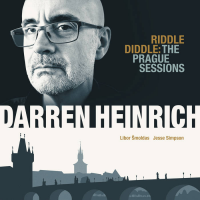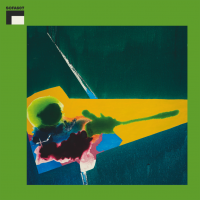Home » Jazz Articles » Album Review » Marc Copland: Alone
Marc Copland: Alone
Copland's last solo piano disc, the marvelous Time Within Time (Hatology, 2005) was one of the year's best. It may be a late entry for the year, but in the arena of solo piano, Alone is an equal contender. Copland evolves gradually rather than breaking significant new ground with each record, and the development between Poetic Motion (Sketch, 2001) and Time can also be found in the four years that have ensued since Time. Terms like "impressionistic," "dark," "intimate," and "abstract" are all good ones to describe Copland's distinctive approach to whatever music he turns his hand to, but while his last two solo discs focused on original music and standards, the similarly configured Alone expands the repertoire by providing a very specific and unique focus on three Joni Mitchell tunes.
Mitchell's inventive open tunings for guitar have provided grist for jazz interpretations in the past, notably Herbie Hancock's Grammy-winning River: The Joni Letters (Verve, 2007). But here, Copland draws from more obscure titles in Mitchell's early repertoire: "I Don't Know Where I Stand," from Clouds (Reprise, 1969), "Rainy Night House," from Ladies of the Canyon (Reprise, 1970, and "Michael from the Mountain," from Song to a Seagull (Reprise, 1968). What's, perhaps, most important is that these all come from before Mitchell began to dabble more explicitly in sophisticated jazz harmonies. Written more directly, that means Copland actually has more interpretive latitude, and he takes great advantage; the beauty of a Copland solo piano recital is that, while the non-original material is inevitably recognizable, his personal approach to reharmonization makes it sound very much as though he'd written it in the first place.
Copland's original material continues to demonstrate a equally personal and oblique approach the blues ("Blackboard"), while expanding Night Whispers' title track into an 11-minute, indigo-shaded tour-de-force where everything the trio delivered explicitly becomes implicit, suggested. A newer tune, "Into the Silence," revolves around a 7/4 ostinato; another brooding piece where Copland's ability to paint vivid images in sound remains intact.
He may be better-known in Europe, but Copland is one of America's too well-kept secrets. Those who've not yet been charmed by his inward-looking pianism couldn't start at a better place than the aptly titled Alone.
Track Listing
Soul Eyes; I Don't Know Where I Stand; Night Whispers; Into the Silence; Rainy Night House; I Should Care; Fall; Blackboard; Michael From Mountain; Hi Li Hi Lo.
Personnel
Marc Copland
pianoMarc Copland: piano.
Album information
Title: Alone | Year Released: 2009 | Record Label: Pirouet Records
Tags
PREVIOUS / NEXT
Marc Copland Concerts
Support All About Jazz
 All About Jazz has been a pillar of jazz since 1995, championing it as an art form and, more importantly, supporting the musicians who make it. Our enduring commitment has made "AAJ" one of the most culturally important websites of its kind, read by hundreds of thousands of fans, musicians and industry figures every month.
All About Jazz has been a pillar of jazz since 1995, championing it as an art form and, more importantly, supporting the musicians who make it. Our enduring commitment has made "AAJ" one of the most culturally important websites of its kind, read by hundreds of thousands of fans, musicians and industry figures every month.





















